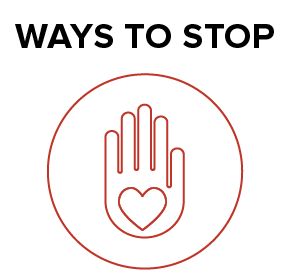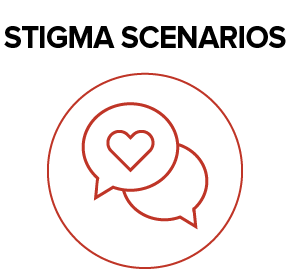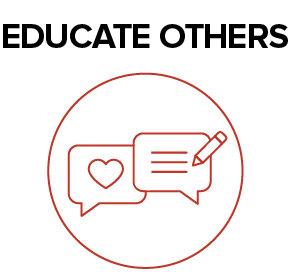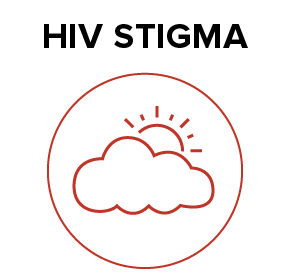Ways to Stop HIV Stigma and Discrimination
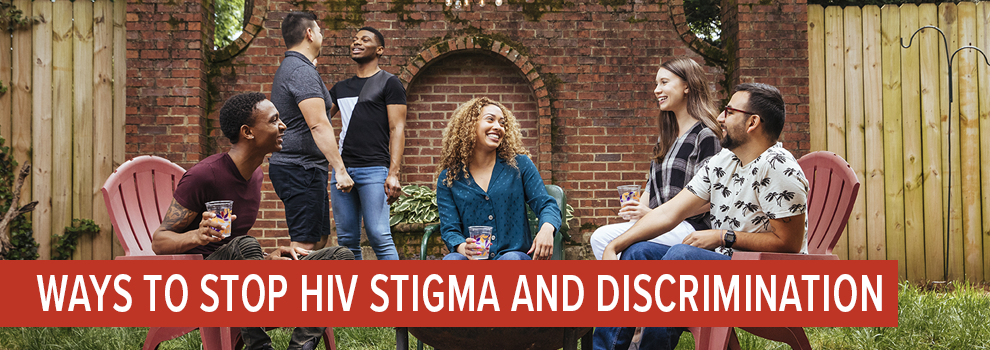
You might be wondering how you can address an issue as complex as HIV stigma. But there are many small things you can do that will make a big difference.
If each of us commits to making positive changes in our families and communities, we can help end HIV stigma and work to stop HIV together. Here are four resources to get you started:
- Stigma Fact Sheet [PDF – 1.8 MB]: This fact sheet discusses HIV stigma, discrimination, and what the effects are on people with HIV.
- Stigma Scenarios: Support in Action. Read through examples of situations that show how HIV stigma can happen in any setting and learn ways to take action
- Pledge Cards: A Commitment to Action. Make a pledge to help stop HIV stigma. Download our pledge cards to customize and post on your website, blog, social media channels, and other digital outlets.
Know how talk about HIV to avoid stigma. The words we use matter. Keep in mind that:
- When talking about HIV, certain words and language may have a negative meaning for people at high risk for HIV or those who have HIV.
- We can do our part to stop HIV stigma by being intentional and thoughtful when choosing our words, and choosing to use supportive—rather than stigmatizing— language when talking about HIV.
Consider using the preferred terms below to avoid promoting stigma and misinformation around HIV.
| Problematic word or phrase | Preferred word or phrase |
|---|---|
| AIDS (when referring to the virus, HIV) | HIV
HIV and AIDS (when referring to both) |
| Why: AIDS itself is not a condition. It is a range of conditions, or a syndrome, that occurs when a person’s immune system is weakened by the HIV infection. | |
| To catch AIDS To catch HIV To pass on HIV |
To be diagnosed with HIV To acquire HIV To transmit HIV |
| Why: AIDS cannot be caught or transmitted. People get HIV. HIV can be transmitted, but it is not hereditary. | |
| Unprotected sex | Sex without a condom or medicines to prevent or treat HIV (such as pre-exposure prophylaxis (PrEP) or antiretroviral therapy) |
| Why: “Unprotected sex” is often associated with sex without a condom. More precise terms are necessary as today there are numerous ways outside condom use to engage in safe sex to prevent HIV. | |
| Body fluids | Blood, amniotic fluid, semen, pre-ejaculate, vaginal fluids, rectal fluids, breast milk |
| Why: Only some body fluids transmit HIV. “Body fluids” covers all fluids coming from the body and not just those involved in HIV transmission. Be specific when possible. | |
| To battle HIV and/or AIDS War against HIV/AIDS |
Response to HIV and AIDS |
| Why: These terms may be considered militaristic and may lead others to think that people with HIV have to be “fought” or eliminated. | |
| Risk
Risky behavior High(er) risk group(s) |
people with certain risk factors such as [examples]
people who engage in behaviors such as [examples] that may increase their chances of getting HIV risk factors such as [specifics/examples] behaviors that increase the chances of getting or transmitting HIV communities over-represented in the HIV epidemic populations with a high [prevalence/incidence] of HIV |
| Why: Some risk-related terms can be stigmatizing and may imply that the condition is inherent to a person or group rather than the actual causal factors. | |
| Victims Sufferers Contaminated Sick |
People/person with HIV |
| Why: Some people with HIV feel that these terms imply that they are powerless, with no control over their lives. Other unhelpful terms negatively define people with HIV by the condition. These terms also segregate the people who have HIV. | |
| AIDS patient HIV patient Patient |
Person with AIDS
Person with HIV |
| Why: The term “patient” implies a constant state of illness that can be misleading and demoralizing. Outside a clinical context, a person is not a patient. | |
| Positives HIVers AIDS or HIV carrier(s) |
Persons/people with HIV
People with HIV (PWH or PWHIV) |
| Why: A person is not HIV or AIDS. A person lives with HIV once he or she gets the virus or progresses to having an AIDS diagnosis. | |
| Injection [injecting] drug user (IDUs) |
Persons/people who inject drugs (PWID) |
| Why: Injecting drug use refers to the transmission category and not the people themselves. | |
| People who have an undetectable viral load have little risk of transmission | Treatment as prevention (TasP)
People with HIV who have an undetectable viral load: – will not/won’t transmit Undetectable = Untransmittable or U=U People who are undetectable have effectively no risk of transmitting HIV People who are undetectable have negligible risk of transmitting HIV |
| Why: Research has shown that having an undetectable viral load prevents HIV transmission to others through sex or syringe sharing, and during pregnancy, birth, and breastfeeding. This is sometimes referred to as “treatment as prevention” (TasP). | |
